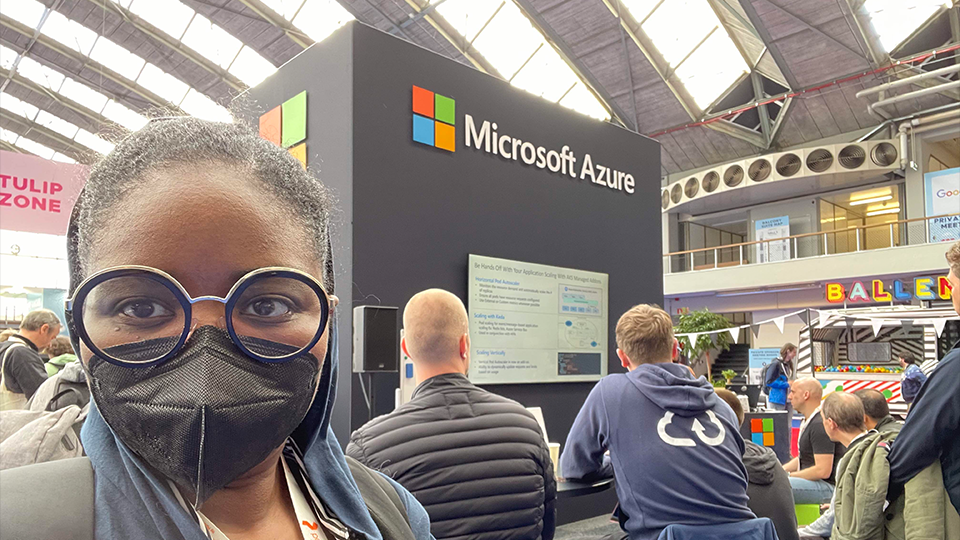Container security is some serious business at Microsoft, demonstrated by the addition of Kata Containers to AKS (Azure Kubernetes Service).
At the most recent KubeCon EU held in Amsterdam, The Netherlands, Microsoft announced that Kata Containers – along with Confidential Containers – are being leveraged to build and maintain zero-trust environments as part of its Azure Kubernetes Service (AKS) offering. This move highlights the growing importance of container security and isolation in the Kubernetes ecosystem and demonstrates Microsoft’s commitment to providing a secure and reliable platform for its customers.
Wait… what is Kata Containers?
I’m glad you asked! Kata Containers is both an open-source project and a community that provides a secure container runtime environment for running containers. Kata Containers the Project uses lightweight virtualization technology to create a secure and isolated environment for each container, providing hardware-enforced isolation between containers and the host system. This means that each container has its own mini operating system and kernel, making it harder for attackers to gain unauthorized access which provides a higher level of security and isolation than traditional container runtimes, all while still maintaining compatibility with existing container images and tools.
Microsoft’s announcement about Kata Containers in AKS is like a superhero team-up – the ultimate combination of security and reliability, ready to take on any threat! With the increasing adoption of Kubernetes in enterprise environments, security and isolation are becoming more critical, and companies are looking for ways to ensure that their containers are running in the most secure and isolated environment possible.
That sounds great! Now tell me about AKS…
Azure Kubernetes Service (AKS) is a fully-managed Kubernetes container orchestration service that simplifies the deployment and management of containerized applications by providing enterprise-grade security and availability, allowing organizations to easily deploy, scale, and manage containerized applications in the cloud. AKS automates many of the manual processes involved in managing Kubernetes clusters, such as scaling and upgrading, making it easier for developers to focus on building applications instead of managing infrastructure. AKS also integrates with other Azure services, such as Azure Active Directory, Azure Monitor, and Azure DevOps, to provide a complete end-to-end solution for containerized application development and deployment.
By using Kata Containers in AKS, Microsoft is demonstrating its commitment to providing a secure and reliable platform for its customers. AKS is already a popular choice for running containerized workloads on Azure, and the addition of Kata Containers will only enhance its appeal. Customers will be able to take advantage of the increased security and isolation provided by Kata Containers, while still being able to use their existing container images and tools.
In conclusion, Microsoft’s announcement about using Kata Containers in AKS is a significant move that highlights the growing importance of security and isolation in containerized environments. By using Kata Containers, Microsoft is providing its customers with a more secure and reliable platform for running containerized workloads on Azure, while also demonstrating the value of open-source technology in the container ecosystem. This is a positive development for the community, sure to lead to increased adoption of secure container runtimes like Kata Containers in the future.
I’m sold. Now where is it?!
Well… we got you covered!
Step 1: Mosey on over to https://azure.microsoft.com/ and create an Azure account if you don’t already have one.
Step 2: Once you’re logged into your Azure portal, click on “Create a Resource” and type in “AKS” in the search bar.
Step 3: Click on “Azure Kubernetes Service (AKS)” from the search results.
Step 4: Fill in the required information such as the subscription, resource group, and cluster name. For simplicity, you can keep the default settings for the rest of the options.
Step 5: Click “Review + Create” to review your settings and then click “Create” to deploy your AKS cluster.
Step 6: Once your AKS cluster is deployed, you can connect to it using the kubectl command-line tool. You can download kubectl from the Kubernetes website or use the Azure Cloud Shell.
Step 7: Use the kubectl command-line tool to deploy your containerized applications to your AKS cluster.
And that’s it! With these simple steps, you can easily set up and use AKS to manage your containerized applications. If you need more help or guidance, check out Microsoft’s excellent docs site.
Lastly, how do I get involved with Kata Containers?
Great question! You’re welcome to join the Kata Containers Architecture Committee meeting, which takes place every Tuesday on Zoom at 1500 UTC. This is a great opportunity to interact with other Kata Herders, ask questions, stay up-to-date with the latest features and developments, and even make some new connections. If you prefer written communication, join the lively and engaging Kata Containers Slack. This is where you can hold conversations with community leaders about the coolest and most cutting-edge container runtime technology around. If you prefer a more traditional communication method, join the official Kata Containers mailing list. This is where we share important announcements, releases, community speaking engagements and more. We look forward to seeing you around in the community. Happy herding!

)







